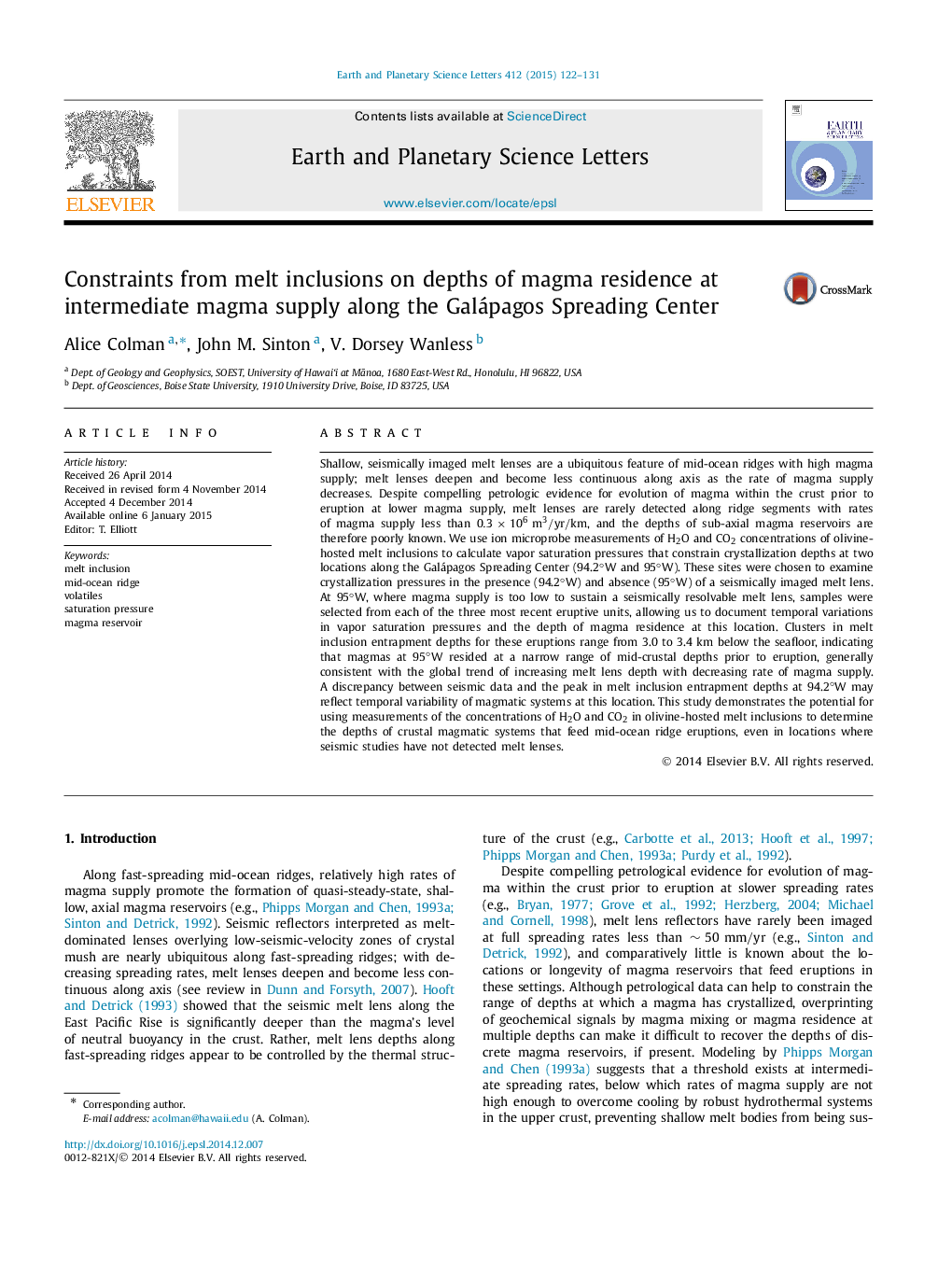| کد مقاله | کد نشریه | سال انتشار | مقاله انگلیسی | نسخه تمام متن |
|---|---|---|---|---|
| 6428638 | 1634744 | 2015 | 10 صفحه PDF | دانلود رایگان |

• We measure H2O and CO2 in melt inclusions from the Galápagos Spreading Center.
• Melt inclusion saturation pressures constrain pre-eruptive magma residence depths.
• Three consecutive eruptive units at 95°W had magma residence depths of 3–3.4 km.
• At this location, no axial melt lens has been seismically detected.
• This technique can constrain temporal variations in magma reservoir depths.
Shallow, seismically imaged melt lenses are a ubiquitous feature of mid-ocean ridges with high magma supply; melt lenses deepen and become less continuous along axis as the rate of magma supply decreases. Despite compelling petrologic evidence for evolution of magma within the crust prior to eruption at lower magma supply, melt lenses are rarely detected along ridge segments with rates of magma supply less than 0.3×106 m3/yr/km0.3×106 m3/yr/km, and the depths of sub-axial magma reservoirs are therefore poorly known. We use ion microprobe measurements of H2O and CO2 concentrations of olivine-hosted melt inclusions to calculate vapor saturation pressures that constrain crystallization depths at two locations along the Galápagos Spreading Center (94.2°W and 95°W). These sites were chosen to examine crystallization pressures in the presence (94.2°W) and absence (95°W) of a seismically imaged melt lens. At 95°W, where magma supply is too low to sustain a seismically resolvable melt lens, samples were selected from each of the three most recent eruptive units, allowing us to document temporal variations in vapor saturation pressures and the depth of magma residence at this location. Clusters in melt inclusion entrapment depths for these eruptions range from 3.0 to 3.4 km below the seafloor, indicating that magmas at 95°W resided at a narrow range of mid-crustal depths prior to eruption, generally consistent with the global trend of increasing melt lens depth with decreasing rate of magma supply. A discrepancy between seismic data and the peak in melt inclusion entrapment depths at 94.2°W may reflect temporal variability of magmatic systems at this location. This study demonstrates the potential for using measurements of the concentrations of H2O and CO2 in olivine-hosted melt inclusions to determine the depths of crustal magmatic systems that feed mid-ocean ridge eruptions, even in locations where seismic studies have not detected melt lenses.
Journal: Earth and Planetary Science Letters - Volume 412, 15 February 2015, Pages 122–131